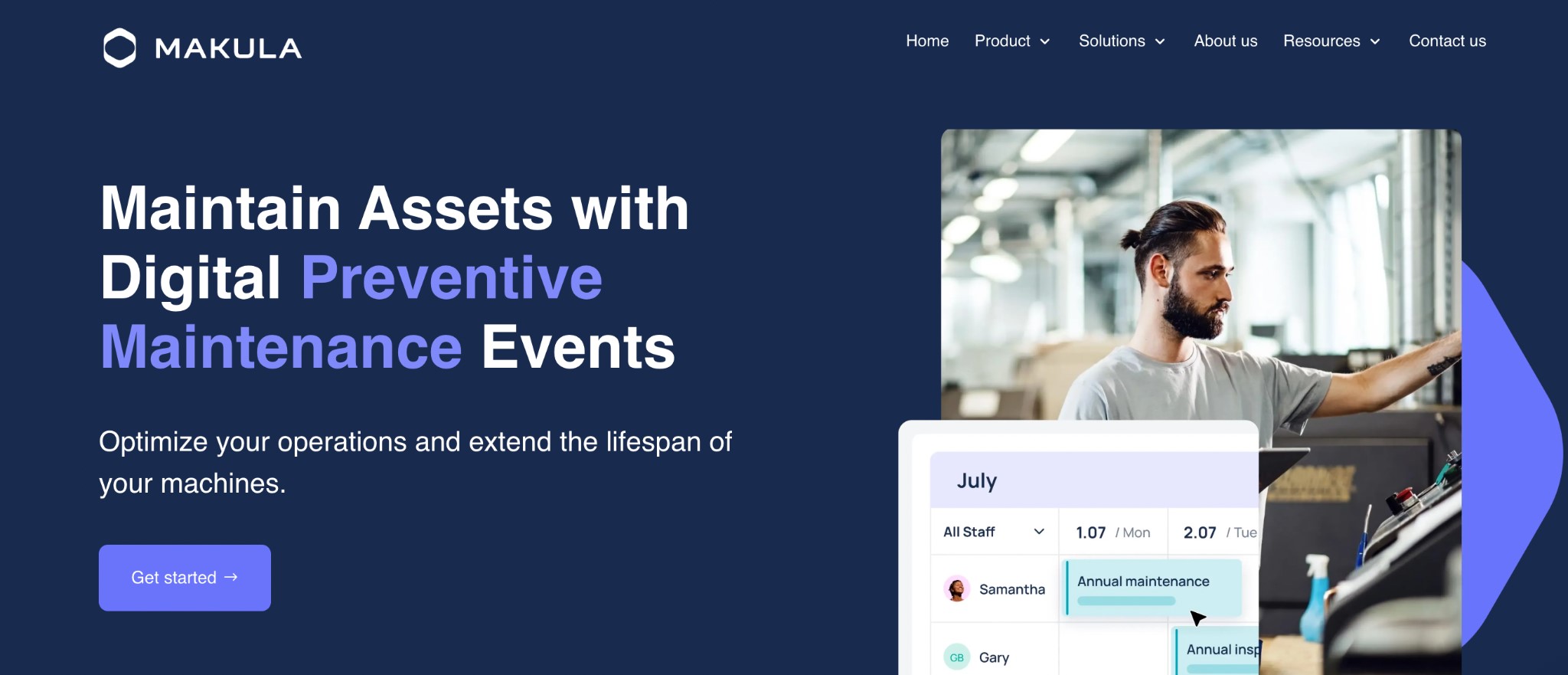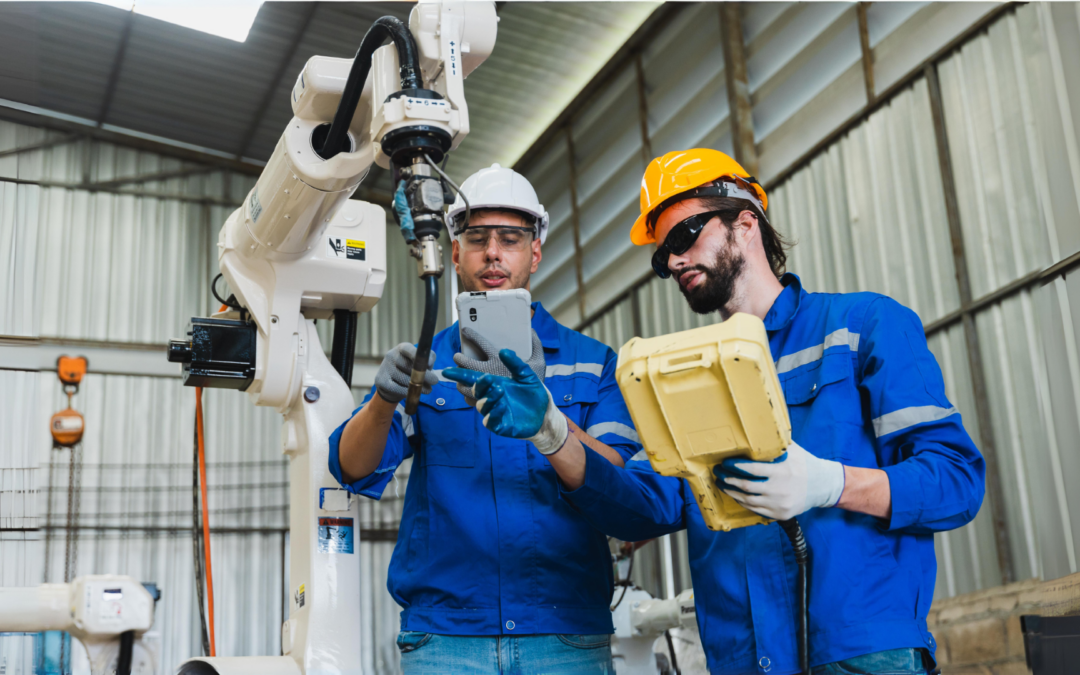In this Blog
Understanding CMMS Maintenance Management Strategies
Role of CMMS Maintenance Management in Preventive vs Reactive Maintenance
Features of CMMS Maintenance Management Facilitating Preventive Strategies
Assessing Current CMMS Maintenance Management Practices
Planning and Implementing a CMMS Maintenance Management Solution
Maximizing Benefits for Companies and Machine Manufacturers Through Maintenance Strategies
To minimize downtime, implement lean principles, and oversee preventative maintenance, 94% of businesses view maintenance, repairs, and operations (MRO) as being highly or somewhat critical (Peerless Research Group, 2018). In the world of asset management and maintenance, the age-old debate of preventive vs. reactive maintenance is about safeguarding the future of your operations.
Imagine slashing your maintenance costs while extending the life of your assets. Sounds like a pipe dream? Not quite. This article dives deep into how a Computerized Maintenance Management System (CMMS) turns this dream into a reality, offering a strategic edge in cost savings and asset longevity.
What You’ll Discover:
- The essential differences between preventive and reactive maintenance
- How CMMS serves as the backbone for effective maintenance management
- Real-world benefits of adopting a CMMS approach
- Strategies for integrating CMMS into your maintenance operations
And speaking of making things a reality, have you heard of Makula? It’s this nifty tool that streamlines the very essence of CMMS, making maintenance management a breeze. With Makula, you’re using a smarter, cost-effective way to ensure your assets live a long, healthy life.

Find out how we can help: Book a free meeting
Understanding CMMS Maintenance Management Strategies
Dive deep into the heart of your maintenance operations. It’s time to uncover which strategy keeps the lights on and ensures they shine brighter for longer.
What is Preventive Maintenance?
Preventive maintenance is the forward-thinking hero of the maintenance world. It’s all about regular check-ups and routine maintenance to prevent problems before they start. Imagine your facility as a high-performance car.
In a multifaceted maintenance plan, 80% of maintenance professionals still prefer preventive maintenance (Plant Engineering, 2018). Just as you wouldn’t wait for the engine to fail before servicing it, preventive maintenance schedules services and inspections to keep everything running smoothly. It reduces downtime and extends asset life, making it a no-brainer for those looking to save time and money in the long run.
What is Reactive Maintenance?
Reactive maintenance is the “if it ain’t broke, don’t fix it” approach. It kicks into gear after a problem has occurred, focusing on repairing or replacing equipment to get it back up and running.
While this might seem cost-effective at first glance, it often leads to unexpected downtime, higher repair costs, and a shorter lifespan for your assets. Reactive maintenance is like playing a high-stakes game of whack-a-mole, where you’re always reacting to problems rather than preventing them.
Role of CMMS Maintenance Management in Preventive vs Reactive Maintenance
Preventive maintenance is used by 76% of manufacturing facilities, and computerized maintenance management systems (CMMS) are employed by 51% of them (Plant Engineering, 2016). Understand the power of CMMS systems to improve your maintenance strategy. Discover how CMMS turns routine tasks into strategic assets.
Automated Scheduling and Planning
With the CMMS maintenance management system, gone are the days of manual scheduling and endless spreadsheets. This CMMS maintenance management system automates the scheduling process, ensuring maintenance tasks are performed at the optimal time. It’s like having a smart assistant that remembers all your maintenance needs and plans them efficiently.
This leads to better equipment performance, fewer breakdowns, and significantly reduced downtime. This also contrasts sharply with reactive maintenance, which often leads to last-minute scrambles and suboptimal fixes, undermining equipment reliability and increasing operational risks.
Real-time Tracking and Cost Management
An hour of equipment outage typically costs $260,000 (Aberdeen Group, 2016). CMMS maintenance management system brings clarity and control to your maintenance costs with real-time tracking. It’s like having a financial advisor for your assets, offering insights into where every dollar goes. This feature allows you to monitor work orders, track maintenance expenses, and predict future costs with precision. By providing a detailed view of your maintenance operations, CMMS helps optimize your budget and reduce unnecessary spending. It’s cost management made easy.
Streamlined Implementation and Compliance
Ease and efficiency define the CMMS maintenance management system approach to implementation and compliance. It’s like a Swiss Army knife for maintenance management, offering tools for easy adoption and ensuring regulatory compliance. With CMMS, you can say goodbye to the headaches of paper trails and audits.
The system keeps all your records in one place, making it easier to adhere to industry standards and safety regulations. Streamlined, compliant, and hassle-free—that’s the CMMS promise. On the contrary, reactive maintenance, with its ad-hoc nature, complicates compliance efforts, making it difficult to maintain consistent records and increasing the risk of regulatory issues and fines.
Features of CMMS Maintenance Management Facilitating Preventive Strategies
80% of businesses believe that a CMMS increases productivity in industrial maintenance (Advanced Technology, 2020). Begin your maintenance journey with CMMS features designed to prevent problems before they arise. Let’s explore how.
Automated Scheduling and Work Order Management
Automated scheduling and work order management are the heartbeat of CMMS, keeping your maintenance rhythm steady and strong. This system organizes tasks, optimizes them, and ensures that work orders are issued and completed most efficiently.
This automation reduces human error, ensures timely maintenance, and increases overall operational efficiency. Reactive maintenance, in contrast, lacks this foresight and coordination, leading to inefficient maintenance workflows that prioritize immediate issues over long-term equipment health and performance.
Inventory Management and Parts Tracking
Say goodbye to last-minute scrambles for parts. CMMS’s inventory management and parts tracking feature is your ultimate organizational tool. It keeps a detailed record of your inventory levels, predicting when supplies will run low and automatically reordering parts before you even realize you need them.
This proactive approach saves time and reduces the risk of downtime due to unavailable parts. Makula offers a personalized CMMS solution to streamline inventory management. This proactive capability contrasts with reactive maintenance, where parts are often sourced in a panic, leading to costly rush orders and exacerbating downtime and operational losses.
Asset History Tracking and Performance Analytics
With asset history tracking and performance analytics, CMMS turns your data into actionable insights. This feature keeps a detailed log of each asset’s maintenance history, allowing you to analyze performance over time and make informed decisions about future care. It’s akin to having a personal biographer for each of your assets, providing insights into their life stories so you can predict and improve their future performance.
Assessing Current CMMS Maintenance Management Practices
To ensure your facility’s maintenance practices are up to scratch, consider these essential steps:
- Conduct a Comprehensive Audit: Review all existing maintenance activities, including preventive, predictive, and reactive tasks. This deep dive helps identify what’s working and what’s not.
- Analyze Maintenance Data: Examine data from past maintenance records to uncover trends, such as frequent breakdowns or high-cost repairs, which can indicate areas for improvement.
- Evaluate Team Skills and Resources: Assess whether your maintenance team has the necessary skills and resources to perform their tasks effectively. This might highlight the need for additional training or equipment.
- Benchmark Against Industry Standards: Compare your maintenance practices and performance metrics against industry standards or competitors. This can reveal gaps in your strategy.
- Solicit Feedback from Staff and Stakeholders: Engage with those who are directly involved in or affected by maintenance processes. Their insights can provide valuable perspectives on areas needing enhancement.
Planning and Implementing a CMMS Maintenance Management Solution
Between 60 and 80% of CMMS initiatives fail because of inadequate management support, inadequate user involvement and training, and ambiguous objectives (Fiix, 2019). Enhance your maintenance strategy with a well-executed CMMS solution.
Here’s how to start this pivotal journey.
Choosing the Right CMMS Maintenance Management Software
Selecting the right CMMS maintenance management software is crucial. It’s about finding a match that aligns with your facility’s unique needs and goals. Look for software that is feature-rich and scalable like Makula. Consider factors like ease of use, integration capabilities, and customer support. This is a partnership that will define the future of your maintenance operations.
Preparing for CMMS Implementation
Preparation is key to a successful CMMS implementation. Start by setting clear objectives for what you want to achieve with the system. Gather a dedicated team to lead the project, ensuring they have a solid understanding of your current processes and desired outcomes. Engaging with all levels of staff early on helps ensure buy-in and facilitates a smoother transition. Remember, the goal is to install new CMMS maintenance management software and enhance your overall maintenance strategy.
Best Practices for CMMS Deployment
When deploying your CMMS, follow best practices to maximize its benefits. Begin with a phased rollout, focusing on critical areas first to gain quick wins and build confidence. Provide comprehensive training for all users, tailored to their roles and responsibilities. Encourage feedback and be prepared to adjust your approach as necessary.
Regularly review system performance and user engagement to ensure the CMMS continues to meet your evolving needs. This ongoing commitment to optimization is what turns a good CMMS deployment into a great one.
Maximizing Benefits for Companies and Machine Manufacturers Through Maintenance Strategies
Adopting a preventive maintenance approach over a reactive one offers substantial benefits for both companies and machine manufacturers, leading to a win-win scenario. For companies, it means significantly reduced downtime and enhanced service quality standards, ensuring operations run smoothly and efficiently.
Machine manufacturers, on the other hand, benefit from improved customer satisfaction and loyalty, as their products are perceived as more reliable and long-lasting. This strategic shift optimizes performance and fosters a partnership based on trust and value, setting a new benchmark in operational excellence and customer service.
Key Takeaways
- CMMS Maintenance Management optimizes cost savings and asset longevity through a strategic blend of preventive and reactive maintenance approaches.
- Preventive maintenance is preferred for its ability to reduce downtime and extend asset life, supported by data showing 80% of maintenance professionals favor this approach.
- Reactive maintenance can lead to higher repair costs and shorter asset lifespan, highlighting the importance of a proactive maintenance strategy.
- The implementation of a CMMS Maintenance Management System automates scheduling, improves real-time tracking and cost management, and ensures efficient inventory and asset performance analytics.
- Adopting CMMS and prioritizing preventive maintenance over reactive maintenance enhances operational efficiency, reduces unexpected downtime, and fosters better resource management for businesses and machine manufacturers.
- Makula simplifies maintenance management, streamlining processes to boost efficiency and reduce costs, facilitating a forward-looking strategy for optimizing asset performance.
References
Aberdeen Group. (2016). Stat of the Week: The (Rising!) Cost of Downtime. Retrieved 2024, from https://www.aberdeen.com/blogposts/stat-of-the-week-the-rising-cost-of-downtime/
Advanced Technology. (2020). 2020 State of Industrial Maintenance Report. Retrieved 2024, from https://www.advancedtech.com/resource/2020-state-of-industrial-maintenance-report-download/
Fiix. (2019). CMMS implementation guide. Retrieved 2024, from https://cdn2.hubspot.net/hubfs/433051/FIIX%20-%20Downloadable%20Content/FIIX%20-%20cmms-implementation-guide.pdf
Peerless Research Group. (2018). Annual Maintenance Repair and Operations (MRO) Survey 2018: Spending on the rise. Retrieved 2024, from https://www.logisticsmgmt.com/article/annual_maintenance_repair_and_operations_mro_survey_2018_spending_on_the_ri
Plant Engineering. (2016). 2016 Maintenance Study: Seven key findings. Retrieved 2024, from https://www.plantengineering.com/articles/2016-maintenance-study-seven-key-findings/
Plant Engineering. (2018). 2018 Maintenance Survey: Playing offense and defense. Retrieved 2024, from https://www.plantengineering.com/articles/2018-maintenance-survey-playing-offense-and-defense/
In this Blog
Understanding CMMS Maintenance Management Strategies
Role of CMMS Maintenance Management in Preventive vs Reactive Maintenance
Features of CMMS Maintenance Management Facilitating Preventive Strategies
Assessing Current CMMS Maintenance Management Practices
Planning and Implementing a CMMS Maintenance Management Solution
Maximizing Benefits for Companies and Machine Manufacturers Through Maintenance Strategies
















